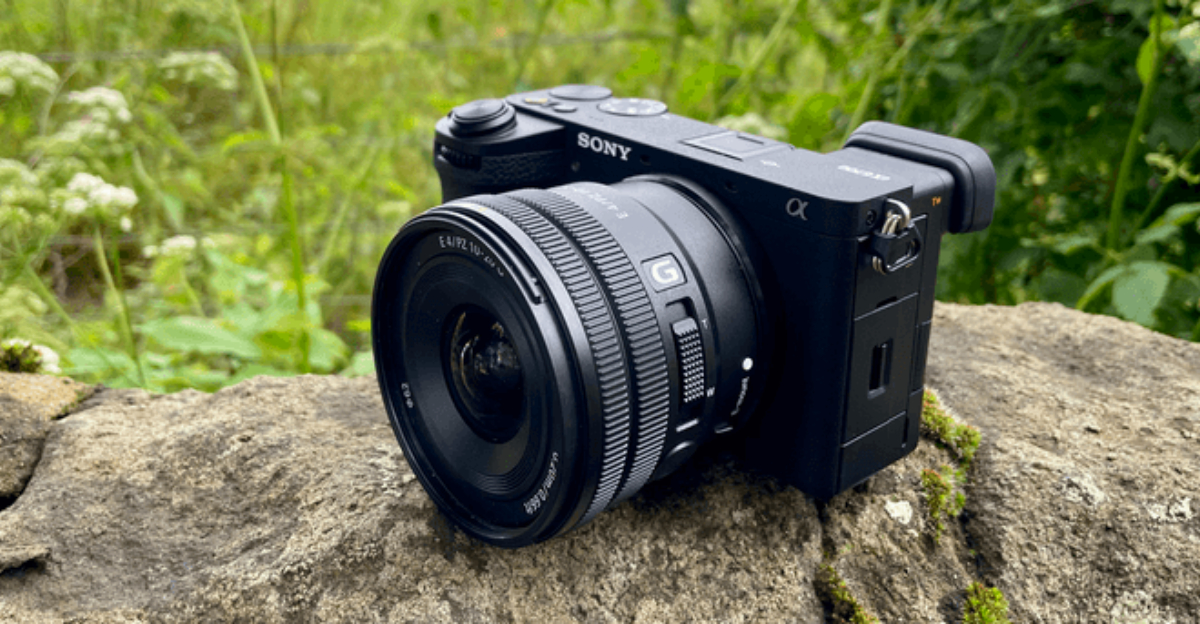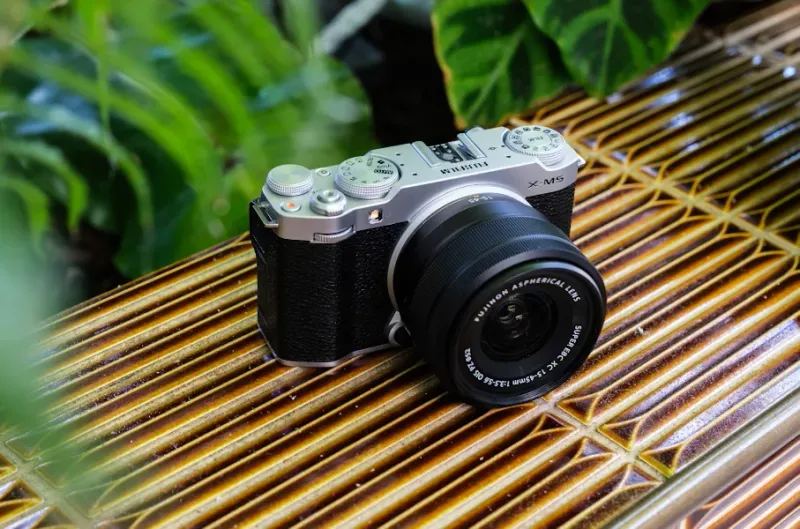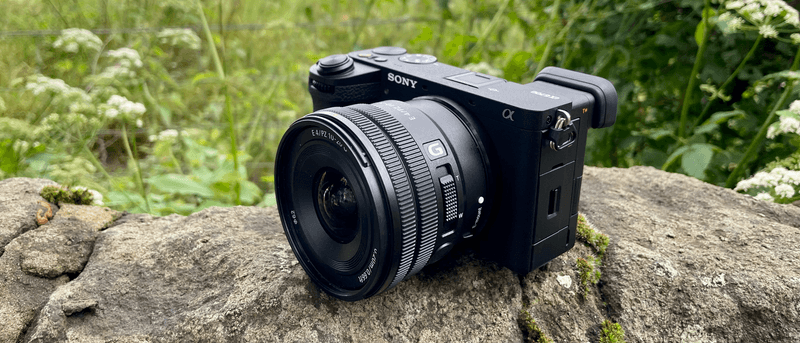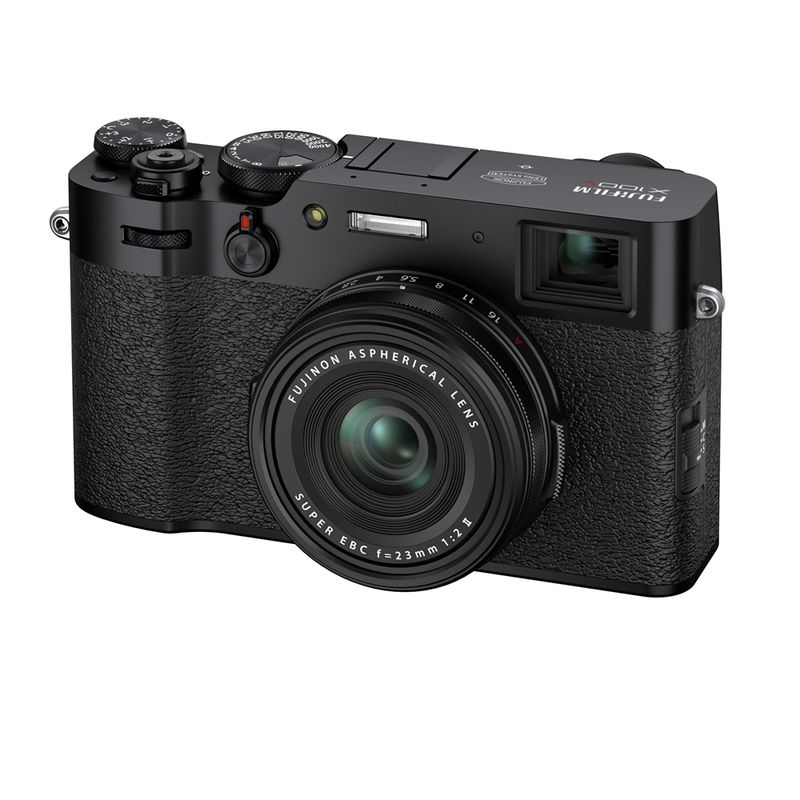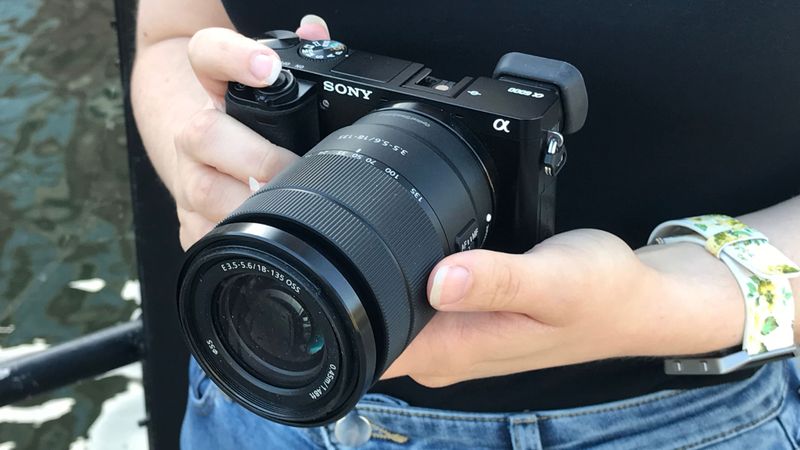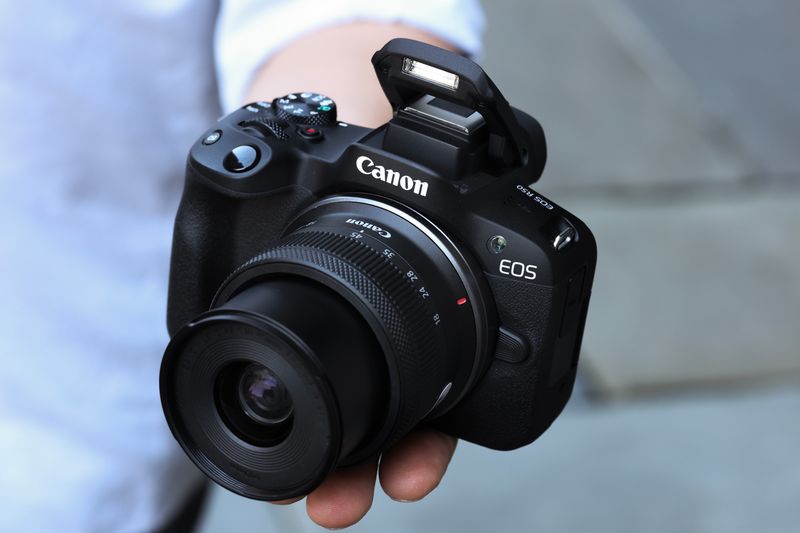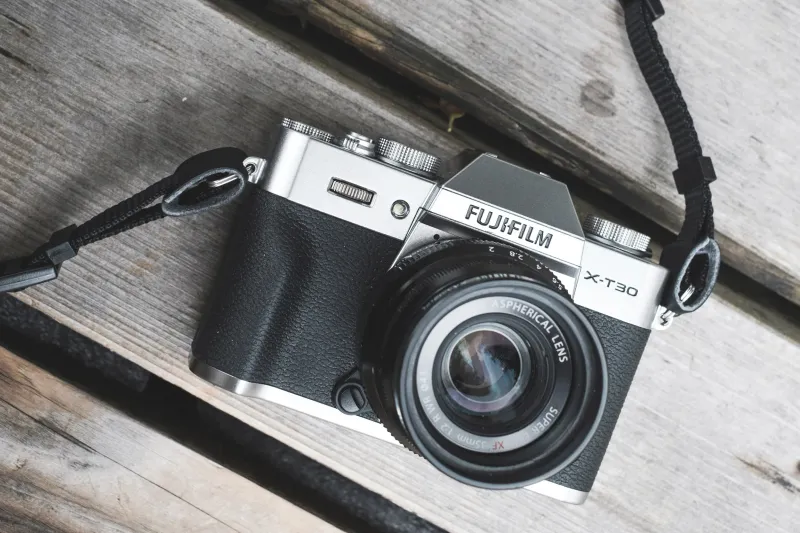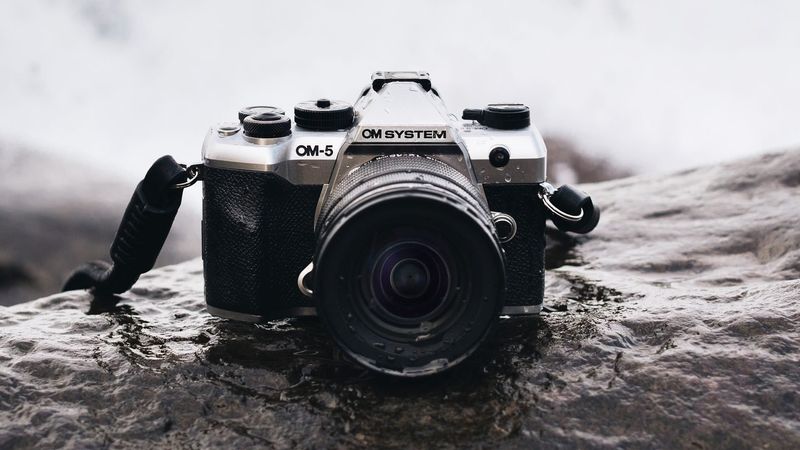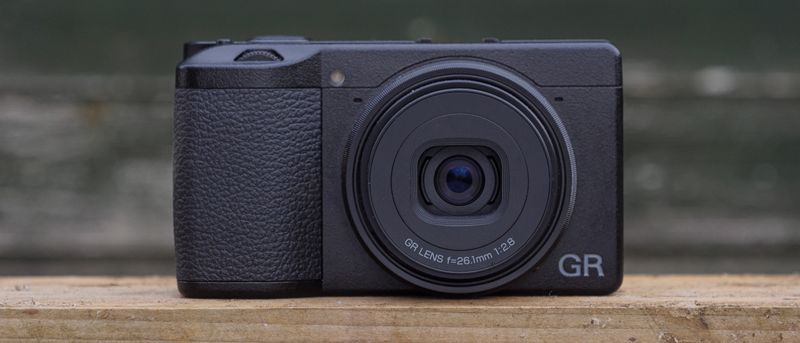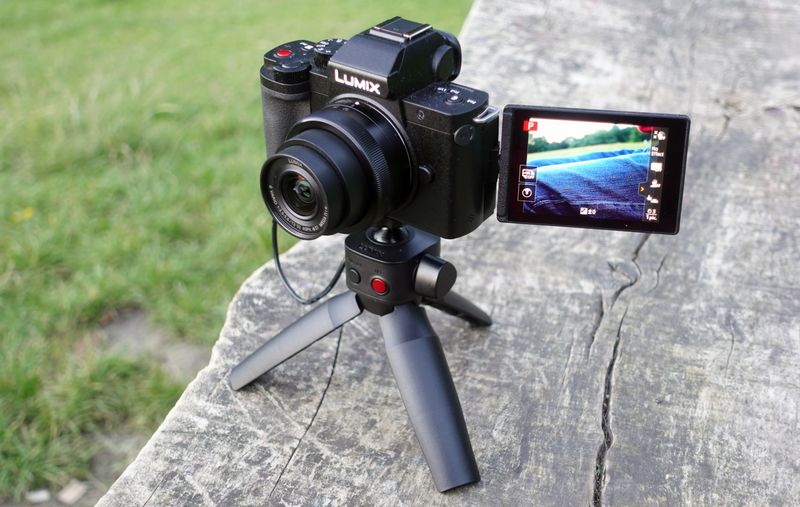Multi-day backpacking demands gear that pulls its weight – and nothing extra. The right camera should be rugged, reliable, and light enough to disappear in your pack while still delivering stunning images. We curated twelve proven options that balance battery life, weather resistance, and sharp optics with real trail practicality. If you’re torn between shaving grams and capturing the moments, this list shows you can do both without compromise.
1. Fujifilm X‑M5
The Fujifilm X‑M5 punches far above its weight for backpackers who care about both stills and video. With an APS-C X-Trans sensor and 6.2K/4K recording, it offers crisp detail without adding bulk. At roughly 355 g including battery and card, it disappears in your pack yet feels solid in hand. USB-C charging streamlines power management on trail. Film simulations deliver pleasing color straight out of camera, saving edit time in camp. Its responsive autofocus and tactile controls make quick work of fleeting light. For hikers who count grams and frames, this body hits the sweet spot.
2. Fujifilm X‑E5
The Fujifilm X‑E5 brings a compact, rangefinder-style body with a practical feature set for long days on trail. Weighing around 445 g with battery, it balances durability and portability for multi-day trips. USB-C power lets you top up from a power bank, reducing reliance on dedicated chargers. Its APS-C sensor and classic Fuji color science provide rich, detailed images with minimal fuss. The small form factor pairs well with compact primes for a truly featherweight kit. Controls are intuitive even with gloves. For hikers wanting a low-profile, high-quality camera, it’s a compelling pick.
3. Fujifilm X‑T5
The Fujifilm X‑T5 delivers exceptional image quality in a compact APS-C package that excels outdoors. Its 40 MP sensor provides incredible detail for landscapes, crops, and big prints without hauling a heavier system. Rugged build and weather resistance suit rough trails and unpredictable weather. Despite its power, the body remains backpack-friendly and well-balanced with lightweight primes. In-body stabilization helps when shooting at dusk after long mileage. Battery life is respectable, and USB-C charging simplifies resupplies. If you want near-flagship results without extra ounces, the X‑T5 is a trail-proven companion.
4. OM System OM‑5
The OM System OM‑5 is purpose-built for travel and backpacking, weighing about 414 g with battery. Its weather sealing, 5-axis stabilization, and strong 4K video make it ready for rain, dust, and long trail days. Micro Four Thirds keeps lenses tiny, allowing a versatile kit without weight penalties. Features like computational modes, Live ND, and excellent IBIS expand creative options without a tripod. The grip feels secure, yet the camera slips easily into a hip belt pouch. For backpackers who prioritize portability and reliability, it’s a nimble, tough performer.
5. Sony a6700
The Sony a6700 offers powerful APS-C performance in a compact, trail-friendly body. At roughly 493 g with battery and card, it stays manageable for multi-day carries while delivering excellent stills and video. Sony’s autofocus tracking is fast and sticky, ideal for wildlife encounters on the move. Strong 4K options and efficient codecs keep pack weight down by reducing extra gear needs. Pair it with a small prime or collapsible zoom for a balanced kit. USB power keeps charging simple, and the grip remains comfortable during long shooting days. It’s a versatile, modern option.
6. Fujifilm X100V
The Fujifilm X100V simplifies backpacking photography by eliminating lens choices. Its fixed 23mm f/2 lens is sharp, fast, and versatile for landscapes, trail life, and environmental portraits. Weighing about 478 g with battery and card, it’s easy to carry without sacrificing quality. Leaf shutter enables quiet operation and high-speed sync, while the hybrid viewfinder adds flexibility. Weather resistance is achievable with an adapter filter, enhancing durability. Film simulations produce beautiful color straight out of camera, minimizing editing. For hikers who value minimalism and creativity, this camera is a superb one-body solution.
7. Sony a6000
The Sony a6000 remains a popular ultralight choice for budget-minded backpackers. Its compact APS-C body and quick autofocus deliver strong results without extra mass. The camera’s simple controls, reliable performance, and wide lens ecosystem make it easy to tailor a lightweight kit. Despite its age, it captures clean images in good light and holds up for social sharing and prints. Battery life is manageable with spares or USB adapters. It’s a smart starter body for hikers who prioritize portability and cost. Pack it with a small prime for a truly featherweight setup.
8. Canon EOS R50
The Canon EOS R50 brings approachable performance to backpackers needing both stills and vlogging capability. Its lightweight APS-C body handles well with compact RF-S lenses, keeping your kit minimal. Fast autofocus and reliable eye tracking make trail storytelling easier, while 4K video supports quality content. The vari-angle screen is handy around camp or for selfie framing. USB charging simplifies power solutions with a power bank. It’s an excellent pick for hikers documenting trips for social or YouTube without carrying heavy rigs. Affordable, capable, and portable – exactly what multi-day adventures demand.
9. Fujifilm X‑T30 II
The Fujifilm X‑T30 II is a favorite among backpackers for its light body and excellent imaging. It pairs Fuji’s color science with agile autofocus and crisp 4K video in a compact package. The camera’s controls are intuitive, making it easy to operate on the move. With small primes or a travel zoom, the total kit stays minimal. It’s ideal for hikers who want high quality without the heft. USB power and efficient batteries aid longer outings. Whether documenting campsites or sweeping vistas, it delivers consistently sharp, beautiful results.
10. OM System OM‑5 II
The OM System OM‑5 II refines a trail-ready formula while preserving the compact, lightweight ethos. Expect excellent in-body stabilization, weather sealing, and helpful computational tools like Live ND for creative landscapes. The Micro Four Thirds system keeps lens weight exceptionally low, allowing multiple focal lengths without burden. USB power and efficient operation support multi-day itineraries. Its ergonomics suit gloved use in cold dawn starts. Video features are confidently capable for travel storytelling. If you want a durable, portable camera with modern tricks and minimal weight, this updated model fits the bill.
11. Ricoh GR IIIx
The Ricoh GR IIIx is ultralight minimalism for hikers who value pocket carry over lens swaps. Its 40mm-equivalent fixed lens offers a natural perspective for trail life, portraits, and details. The APS-C sensor delivers crisp, high-quality images that belie the tiny body. Snap Focus is brilliant for fast shooting on the move, and the controls are streamlined. USB-C charging keeps power simple. While not weather-sealed, a small pouch protects it well in packs. For gram-counters who want stealthy, always-ready capability, the GR IIIx is hard to beat on long treks.
12. Panasonic Lumix G100D
The Panasonic Lumix G100D targets travel and vlogging while keeping weight and cost low. As a Micro Four Thirds body, it pairs with tiny lenses to create an ultralight system for backpacking. Its flip screen, solid microphones support, and dependable 4K make it a pragmatic storyteller’s tool. USB charging works well with power banks, simplifying long itineraries. While not the most rugged, careful packing keeps it trail-ready. The image quality is respectable, and stabilization options via lenses help. For hikers prioritizing portability and content creation, it’s a smart, budget-friendly choice.
